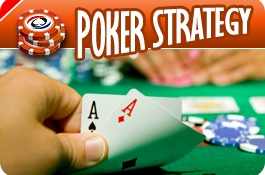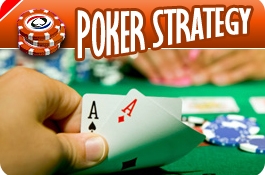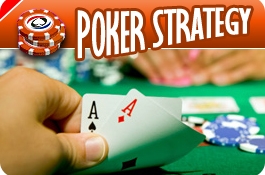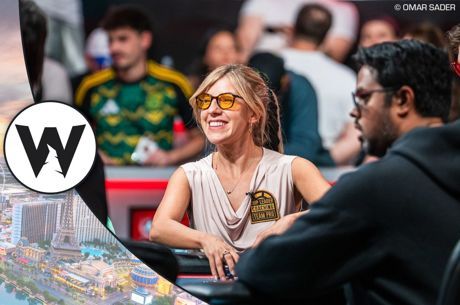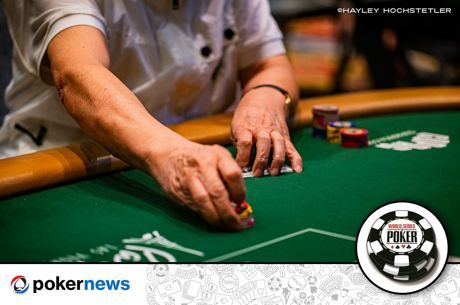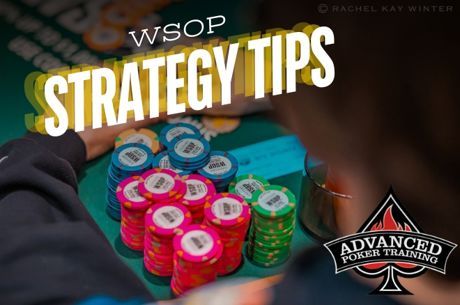Tournament Poker with Jeremiah Smith: To Flip or Not To Flip
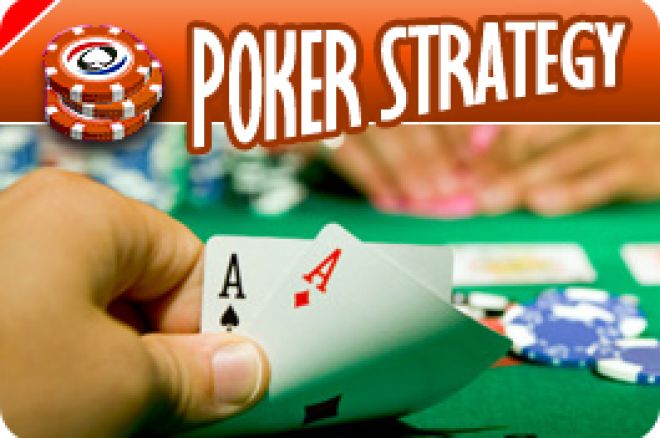
While understanding the eventual inevitability, most live pros do their best to avoid coinflips. Late on Day 2 of the $1,000 WSOP ��stimulus special�� I ran into Steve Sung during a twenty-minute break. Steve��s customary stoic appearance had been replaced by a wide-eyed expression of incredulousness. ��I raised, he reraised, and the next thing I know I was all-in with queens�� I hate flipping�� I mean I just hate it.��
Judging by the look on his face, I assumed Steve had been eliminated. After a few years on the tournament trail, I knew I had to pick my next words carefully: ��So you busted, eh?��
As it turned out, the look of astonishment was not the result of a painful elimination deep in a big tournament. Nor was it a result of an adrenaline rush from winning the unavoidable ��classic race�� against A-K. Instead, it simply came from the fact that with less than thirty people left he even found himself in a coinflip situation.
Using a very precise mathematical calculation that factors in my handful of years as a tournament reporter, I��ve witnessed somewhere around eleventy-million of these race situations. I��ve seen it all, from A-Q versus J-J to 10-6 versus 3-3 (yes, the guy with the 10-6 did claim to have put his opponent on threes�� and yes, his all-in call was justified when 3-3 made a set that completed his four-card straight).
So, if they��re inevitable, unavoidable, and ultimately preordained by the poker gods, why do the poker pros that regularly compete for player of the year honors detest them so badly? A very short answer would be, quite simply, edges. Players like Steve Sung feel that flipping decreases their edge by increasing their variance. They play a style of poker dictated by position and pot control. While it may be a distant cousin of Negreanu-esque small-ball, it relies not so much on making hands after the flop as it does situational experience, both pre- and post-flop. This runs counter to a purely mathematical approach which dictates taking flips depending on an individual hand or pot dynamic, rather than viewing the tournament as a whole. That is to say, some players feel it��s always correct to take a coinflip if the pot odds are correct.
In a conversation just before the 2008 WSOP main event, bracelet winner Bill Edler shared some advice I could��ve used a few weeks earlier in the first $1,500 preliminary event. We were discussing the concept of chip value as it relates to tournaments. Bill was expanding an idea posited in a book on tournament poker when he stated, ��The chips I lose have more value than the chips I win.��
Channeling the Barbara Walters in me, I continued the interview with a deeply profound, ��Huh?��
While the situation Bill outlined was hypothetical, it was one I had both witnessed and participated in a number of times. With the blinds at 500/1,000 and an average stack of 50,000, let��s say you find yourself the chip leader with 100,000. An average-stacked player opens to 3,000 and you reraise with A-K to 10,000. The other player moves all in for 50,000 total. In the hypothetical situation, your opponent reveals that he has 9-9. From a purely mathematical standpoint, it��s correct to take this coinflip because you are only a very slight underdog and you already have 10,000 invested.
However, as Bill explains (and he later outlined in a tip from Full Tilt Poker), adding 50,000 to your stack would not really change the dynamics at your table. On the other hand, losing 50,000 would change everything. At a table of 50,000 stacks, there��s not much difference between 100,000 and 150,000. But there is a huge difference between 100,000 and 50,000; you��ve moved from being chip boss to an average stack if you lose the flip. Losing those chips would cost a significant amount of value whereas winning them adds very little relative to your table. You will only add 33% to your stack if you win, while losing would cost you 50%.
I have two instances from my own experience that come to mind when I consider this concept. A few years ago in a $1,000 tournament at the Bellagio, I had over a third of the chips in play when the final table started. In my typical chip-dusting fashion, I ended up in fifth place after trying to play table sheriff and bust the players who dared to reraise me, ultimately taking my 3-3 up against A-9 and losing. While there��s no guarantee I would��ve won the tournament, folding the 3-3 would��ve kept me in the chip lead and locked up a higher finish.
I repeated this mistake late on Day 1 of the first $1,500 prelim at the 2008 WSOP. After running my 3,000 starting stack up to a staggering 65,000 at dinner break, I lost some chips with A-J vs. Q-Q, threw away most of my stack with A-K, then busted with 9-9 in a race against A-J. Upon reflection, I realized that I was an okay poker player but a terrible gambler. If I didn��t accumulate those chips by racing and flipping, why should I start once I had the big stack?
There are other, more thorough explanations of these concepts in books about tournament poker. However, for this paper lion, it took a conversation with Bill Edler to blow some dust off the piles of equations and charts this concept was buried under. There��s a time in every tournament where your survival will come down to a heads-or-tails decision, but a skilled player maintains their edge by waiting for the right time and situation.

